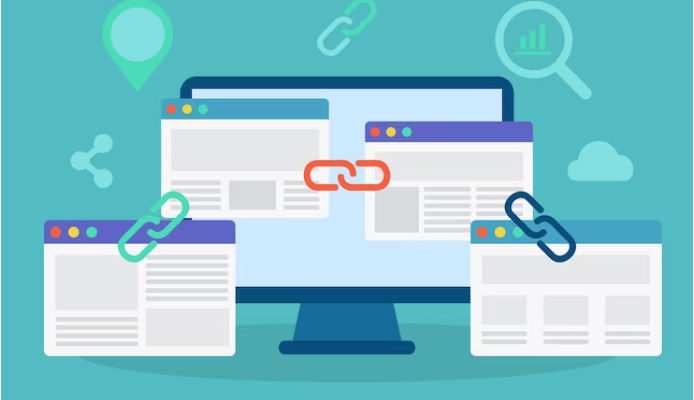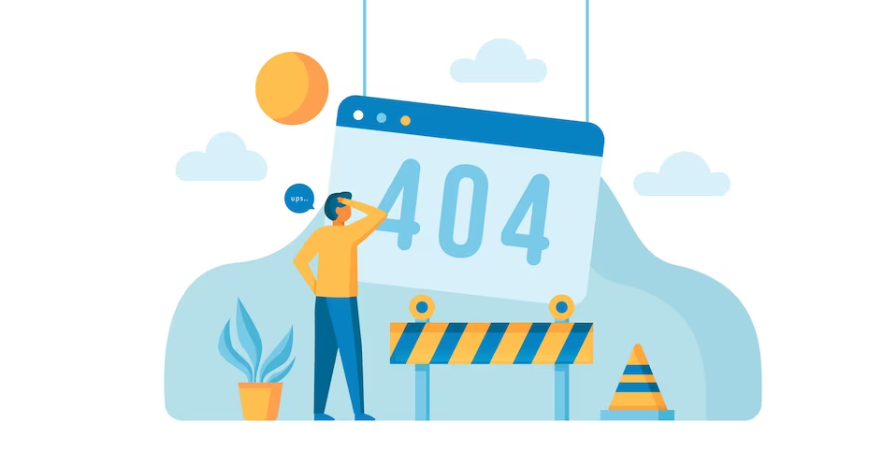This year is about to end and 2024 is about to come. Why don’t we make a SEO Checklist, which will help your website, your business, your e-commerce store to grow. In today’s Article, we will look at a SEO checklist of 10 points, which you can find new sources for your website, traffic, visibility, rank, and can make your website, your business, your e-commerce store grow.
So let’s see this SEO checklist of 10 points.
Why 10 because there is one point, which most people miss. If you understand that point better, and use it properly, then you can increase your website’s traffic a little more. So let’s see this SEO checklist of 10 points.
So before we come to the SEO checklist, let’s see what you can achieve from this checklist. Through this SEO checklist, we want to achieve three things.
- By auditing the website, find more traffic and visibility opportunities.
- Digging out such technical issues, which were preventing your website’s visibility and traffic.
- By looking at the content of the website, find new creative and strategic options.
If you achieve these three objectives through this SEO checklist, then in 2024, your website’s traffic and visibility will increase.
So let’s come to item number 1 of our SEO checklist 2024, which is
1- Domain Audit via Site Operator

If you go to Google search and search for the domain name of your website, then you will see the URL search results of your website. I know this is not a secret tip. All SEOs know this. But they use it to see if the page index of all SEOs is there or not. Now this is the wrong method. Because the Site Operator does not give 100% correct information about indexing. Now if Site Operator is not a 100% method, then which method can you use to find out if your page is indexed or not? You have to use Site Operator. Right now, in this SEO checklist, to see if the pages of your
websites are not indexed. If there is no test or staging domain left open for indexing, like Google has indexed it and traffic is diverting on it. Also, in this test, you don’t have to enter the HTTPS www domain after the site colon. You just have to type the domain as it is, the naked domain. So that Google can find and remove your hidden subdomains. Site Operator often removes such pages hidden in many websites, which we are not able to catch in any other type of audit. And the bigger the website, the more loss this type of poor quality and unwanted subdomains and pages cause. So find them and make them nonindexed or unavailable for Google search. You can decide the method.
2 – GSC audit

GSC means Google Search Console. Google Search Console is the primary tool that covers the organic part of your website. Now Google Search Console is a very big tool. It has a lot of information. That’s why I will provide you with a list of what you have to check for this SEO checklist.
- Server Error in Website. That is, which pages have an error of 500 types?
- Error of 403 Access Denied.
- Error of Discovered, Crawled and Currently Not Indexed. How are these pages? You have to check them.
- Is there a manual action on the website?
- Is there a security message for the website in Google Search Console? Check this too.
- Is there any removal request?
3 – Google Analytics Audit

Google Analytics can analyze the complete traffic of your website. Search Console. Where only search results capture the traffic coming from the page. Whereas Analytics can measure the traffic coming from any source. It can keep an account. So you can use Google Analytics to get more details of your website traffic. But again, Google Analytics also provides a lot of data. So what do you have to see for this SEO checklist? I will tell you in short.
- Is the Google Analytics code missing on some pages of your website? No. This happens more in custom-coded websites. If your website is custom-coded, then the developer may have missed some pages. Or may not be visible by mistake. But if it is a CMS website, WordPress or Shopify, then it will work. There will be no need for it.
- How many of your website’s pages receive zero or one click as a result of organic traffic?
- Is there an index bloat on your website? Index bloat means that when many pages of your website get indexed. On which there is no traffic. In the second step, you have taken out the number of pages with 1 or 0 clicks. First of all, you have to go to Google Search Console.After that, you must deduct the total number of pages you have indexed. . And how to divide it?
For example, if the total index pages of your website are 100. And the pages with 1 or 0 clicks are 60. So we will divide 100 by 60. And the number that comes will be your indexing status number. If this number is less than 1.5. Then there is an index bloat on your website. That implies you should cut down on these pointless pages.. And if it is more than 1.5. Then it is fine. There is no problem.
4 – Sitemap

The next point is Sitemap. It’s not necessary to have a sitemap for website crawling. But through Sitemap, you can tell Googlebot. Which pages do you want to index? Whom do you want to index? Whom do you want to rank? Now there are many options in Sitemap. Which options do you have to check? First of all, you have to see these points.
Is Sitemap present in the website? Is it or not? If Sitemap is present. Then has it been submitted in Google Search Console? And if it has been submitted. Then is this Sitemap clean? Are there any pages in it that have no value? For example, Terms and Conditions, Privacy Policy, Refund Policy. These types of pages will not be on your Sitemap. Even if they are not indexed, it will work. Keep it in your website’s Sitemap. Don’t downgrade its quality.
After this, you have to see. What is the number of indexed pages on your website? Are they added in Sitemap? Sometimes it happens that the important pages of your website. They are not in Sitemap. But Google has indexed them. Now, you forget these types of pages. However, doing it is not a good idea. WordPress or any other CMS.
They cover this problem by default. Because whatever page you add to your website. It is automatically added to Sitemap. But in a custom coded website. These issues are more. That’s why you need to check. That all your indexed pages are in Sitemap. And the last point is. You see such pages. On which there is only one or zero click. And remove them from your Sitemap. These types of low quality, low traffic pages. There is no place in Sitemap. Leave it on Google. Whether to index it or not.
5 – robots.txt

Through robots.txt file. We tell the search engines. Which page can be crawled? Which folder cannot be crawled? And where is the URL of our Sitemap? Where is that Sitemap? For this SEO checklist. You have to check the robots.txt file. And you have to see. Have you disallowed useful pages or folders? Have you disallowed category pages? Category pages should not be disallowed. Have you entered the URL of your Sitemap? In the robots.txt file? Keep robots.txt as simple as possible. Do not make it complicated. For robots.txt file. Recently Google Search Console. Has launched a report. Which we have covered in great detail.
6 – Navigation audit
Navigation means menu. Your website is not just a homepage. There are a lot of internal pages. And the way to reach all these pages. Opens with the navigation of your website. It is like a home gallery. If the gallery is not connected to all the rooms. Then either room is very secret. Or people will not be able to reach there. Naturally, the homepage of your website.
Receives the most traffic. And if the navigation of your website is good. If it is inviting. Then the traffic coming to the homepage. You can take it to the internal pages. You can increase the dwell time. More traffic will come. You only need to know four things. you have to check in the menu of your website, in the navigation.
- Is your menu intuitive? It’s not like you can see the contact us tab before the service.
- In the product section, services are not added. And in the service section, the category is not defined. You should check these types of problems.
- the internal pages should also connect sensibly with each other. They ought to be connected to one another.
- whether breadcrumbs are being used or not in the website. Do use breadcrumbs.
7 – backlink audit

There are a lot of tools to audit backlinks like moz that provide a lot of data. But what will you see in the backlinks data? DA, PA, spam score. You can see all that. However, there are also a lot of other things to see. For example,
- backlinks are not divided between www and non-www. It’s not like you use the www version everywhere. And you are getting backlinks on the non-www URL pattern. This can create a problem. It can dilute the value of your links more. links are not taken from more spammy websites.
- You don’t just have to check the spam score of your backlink websites. However, pay the website a visit and assess whether it seems spammy in general. Is it genuine content? What type of traffic is there? To what kind of audience is it intended?? Are your top pages, the pages that are most important and have the most traffic, are those pages that are getting the most backlinks or not?
- That is, your top most important pages should be the top viewed pages. And the top linked pages should also be there. If this is not the case, if there is no relation between the three, if there is no similarity, then you need to change it.
- Are your top pages also gaining the most internal links? If not, then you can manage the internal links yourself.
- Are your websites getting backlinks from reputed websites? If not, then manage them.
Now you can see how to manage it. There are different campaigns, different ways. But it can be good for your website to get backlinks from reputed websites.
8- on-page audit

A complete SEO checklist can be made on the basis of an on-page audit. Maybe we have made it. But for now, what things will we check for this SEO checklist? Let’s see the important things
- it is necessary for URLs to be SEO friendly. In other words, your URL needs to contain a keyword. It should be small. You should not use any text other than English in it. And so on.
- keywords should be in the slug of the URL, the title of the page, the alt attribute of the image, and the h1 and h2 tags. You don’t have to put keywords in everything. But it should be natural. Where on your page should you place keywords in the content?
- the content of the pages should be of satisfactory length. There are some topics on which small content is good. There are some topics that need to be explained in great detail. So I will not say that you should have content of 2000 pages or 3000 pages. Or it will work with 500 pages. You will have to decide this yourself. But as your target keyword, the focus keyword, you should also have content of the same length.
- you should give the link to the internal pages in the content. Page speed of 9.0, that is, the speed of your website. A while ago, the speed of the website was a separate, independent ranking signal. Which we used to call Page Experience Signal.
Now Google has packaged it in the Helpful Content System. So the speed of your website is still a ranking signal in itself. But it comes under the Helpful Content System. That is, if the speed of your website is down, or the speed of a particular page is down, then its content may not be considered helpful by Google.
No matter how good quality it is, manually written by a human writer, best copywriter, but if its speed is low, it is not performing well, If the gadget is taking a long time to load, Google won’t find it useful., then Google will not consider it helpful. In this type of situation, you should see that your website performs well. And you can do this test through GTmetrix. And through Google’s own Page Speed Insights.
9 – Awesome Pages
In the event that you voluntarily create a page and think it’s nice, but it has no links to any category pages, main pages, or other pages you’ve indexed. If there is no link, then what will you call such a page? Orphan. A page that no one recognizes, no one takes care of it. It is an orphan.
Such orphan pages often lower the SEO value of your website. Because the chances of it being indexed are very low. The chances of it being crawled are very low. Because how will you get its address? Right? And the chances of these pages being ranked are also lower. And you keep getting worried that I am posting content, but it is not ranking. So you have to find such pages.
How to find it?
You can use Screaming Frog. Find and extract the orphan pages of your website. And link them to important pages. For example, link it to the category page. If it is very important, then you can link it directly to the main menu. You can give a link to the homepage. You can give an internal link. But keep it linked. So that Google can find it. And your users can also find it. And with this.
10 – 404 Pages

With this, you can see the error in Google Search Console. Page not found. 404 is not a very important or problematic thing in itself. But when you are trying to solve this not so important issue and create another problem on the website, then the problem arises.
So whenever you go to the Google Search Console report and see the page not found error, then you have to see first that the URL, the URL that Google is telling 404, did you ever make it seriously? Is that page getting a link from somewhere on your website’s other page or navigation, internal content? In order to repair this issue, you should go fix the link if you find one of these. If this link is being used only in external pages, in backlinks, which does not exist now, then you don’t have to do anything for that URL.
You can ignore this problem. Any 404 URL should not be redirected to the homepage or any other page in bulk. If you do this, your chances of being beneficial are very low. There can be more loss. Apart from that, when you check 404 pages, you don’t just have to look at the design so that you can see the 404 message on the screen. It’s well and good. You have to check the Google Developer Tools and you have to see that here you can only see the 404 status code in red color.
You have to check the 404 status code for your 404 page. You have to verify it. If you can see 404, then it’s good. If you can’t see it, then you need to talk to the developer. You need to ask him that after all, why can’t I see any other status code other than 404? I only need 404. So I hope that when you sort out all these issues on your website, the value of your website will increase.
The issues will be sorted out. The traffic of your website will increase. Visibility will increase. Branding will increase. It will be beneficial in every way. So before 2024 comes, be ready to say Happy New Year to your website. There is a lot of time left for the New Year to come. Work hard. Fix all these issues so that your website can say Happy New Year to the whole world. And your business can make you feel


